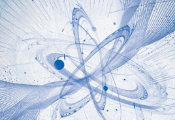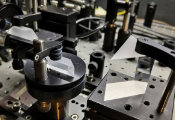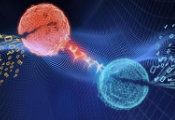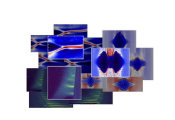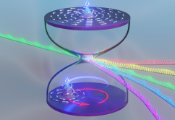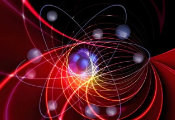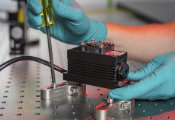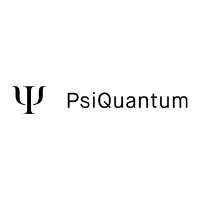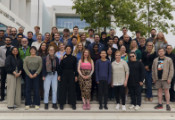NIST Team Develops Technique to Stabilize the Phase of Weak Light Signals in Quantum Network
July 18, 2025 -- Scientists at the National Institute of Standards and Technology (NIST) have taken a crucial step forward in building a large-scale quantum communications network—a system that uses phenomena unique to quantum theory, such as superposition and entanglement, to transmit and process quantum bits of information (qubits).
To store and transmit data, scientists and engineers typically employ streams of photons—particles of light traveling within optical fibers. Traditional, non-quantum communication networks, encode the information carried by the photons using bits, which can only take on the values of one or zero. Quantum networks have the potential to unlock new applications by allowing several quantum computers to communicate with each other using their “native language”—qubits—rather than bits. These qubits often take the form of photonic states that are so closely correlated, or entangled, that measuring the property of one partner automatically determines the property of the other, even if they are separated by great distances.
Although photons, which can be described by a wave, can carry qubits, the entanglement is inherently fragile. To preserve the entanglement, photonic states traveling through the optical fiber must not only remain free of background noise, but also arrive at their destination with a well-defined, stable phase—the position of peaks within the light wave must remain fixed relative to the peaks of a standard light source. For some entangled states, changing the travel path by a mere 700 nanometers—approximately the wavelength of red light—will destroy the entanglement.

Credit: S. Kelley/NIST
Classical measurement systems can stabilize the phase of light, but they rely on bright light signals—trillions of photons per second—and well-established classical photodetectors. However, those techniques won’t work with quantum communication systems, which require extremely faint signals that are easily disturbed by bright light. A simple idea would be to reduce the intensity of the laser light, but that can reduce the accuracy of phase measurements. This poses a new challenge: How faint can the laser light be and not sacrifice precision?
NIST researchers have now found the answer through an innovative method that relies on the interplay between a source of highly stable laser light and the faint light traveling through the quantum network. Because the stable laser light has a fixed phase, it can act as a reference to measure the phase of the light in the network using the principle of interference.

Credit: S. Kelley/NIST
If the interference is destructive (the peaks and valleys of the reference laser light exactly cancel the peaks and valleys of the laser light that traveled the network), then the reference laser measures and helps maintain the optical phase of the future quantum payload. If the interference is not completely destructive, the number of photons detected reveals the phase difference between the reference laser light and the light traveling in the fiber. That phase difference can then be adjusted to create destructive interference, which locks the phase of the photonic states in the network to the phase of the laser light. In this way, the method both measures and preserves the phase of the photons traversing through an optical fiber. Because the measurements are made with faint laser light, the technique does not disturb the delicate entanglement among the photons in the quantum network.

Credit: S. Kelley/NIST
The NIST team demonstrated their technique in an optical fiber connecting NIST and the University of Maryland in College Park, spanning over 120 kilometers (approximately 75 miles). Using displaced photon counting, they not only measured fluctuations in the phase of the light traversing this long-distance link but also stabilized it. The uncertainty in the phase of the stabilized light is tiny, comparable to pinpointing the distance between the Earth and the moon to within a few hundred micrometers—about the width of a human hair.
The method works even when fewer than a million photons per second reach their destination in the fiber. “That’s nearly 10,000 times fainter than standard techniques require,” explained NIST physicist Jabir Marakkarakath Vadakkepurayil. “It’s equivalent to the number of photons that enter your eye from a single pixel of your cellphone screen.”
The researchers, which include physicist Sergey Polyakov of NIST and the University of Maryland in College Park along with collaborators from the Joint Quantum Institute, a research partnership between NIST and the University of Maryland, reported their findings in Optica on 23 April 2025.
“Achieving stable phase control without contaminating quantum states with strong laser light was a major hurdle for long-distance faint light communication, including quantum networks,” said NIST physicist Sergey Polyakov. “Controlling the phase with fewer than a million photons per second is unprecedented—and it removes a critical obstacle.”
The advance paves the way for novel experiments to explore the principles of quantum theory and is also a key step toward building larger, more robust quantum networks. “It brings us closer to the future where multiple, distant quantum sensors can act as one, and quantum computers freely exchange quantum information,” said Polyakov.

